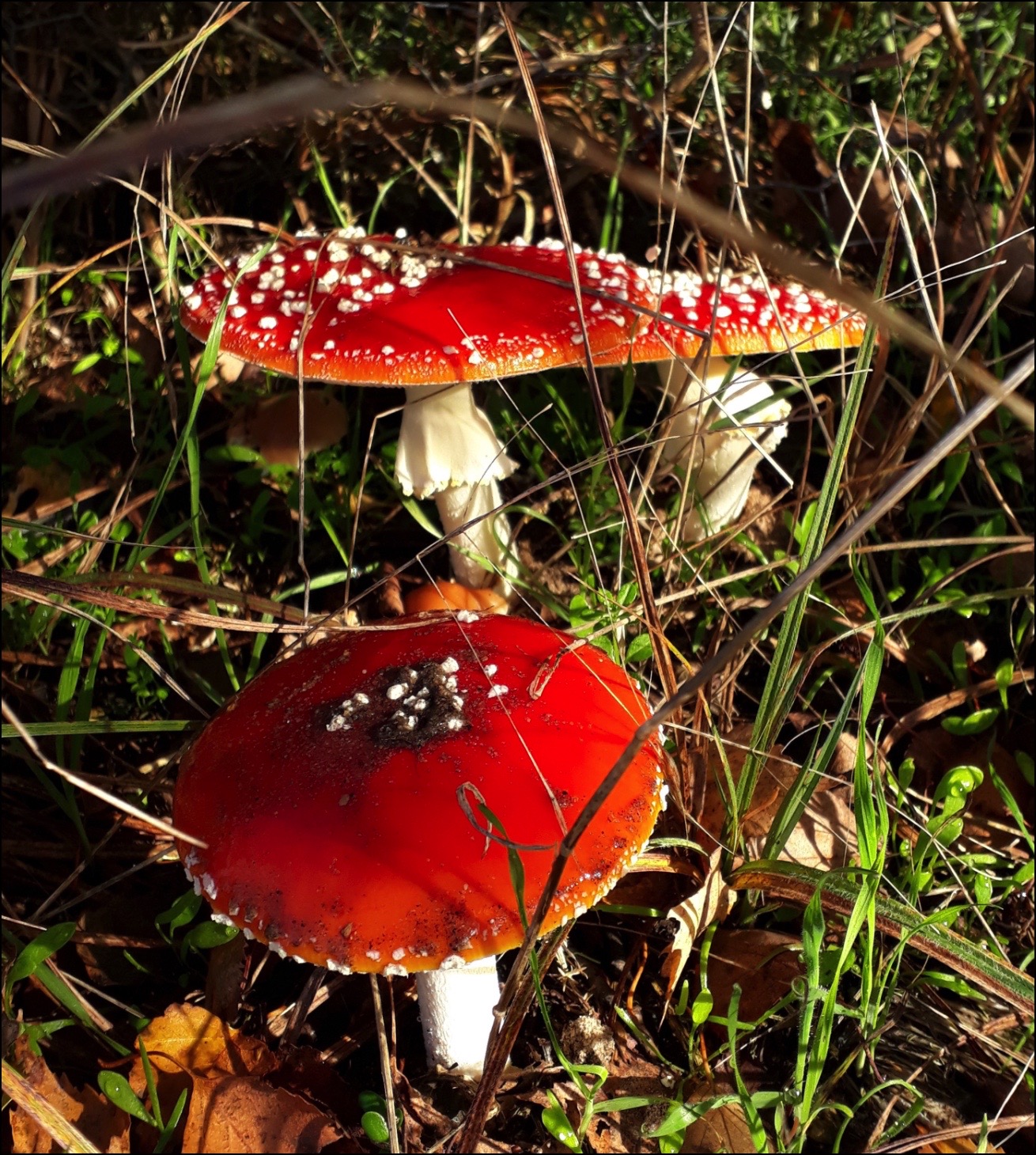Pictured above are Fly Agaric toadstoos by Heidi Jones
As the days are shortening and the weather turning colder, I thought it would be a good time to talk about the star of the show in the natural calendar in Autumn; fungi. We all love Spring- watching the trees get their first leaves and garden bulbs pushing up above the ground. All the plants are growing, using nutrients from the soil below and sunshine from the sky above to create new growth. The fresh growth feed small insects which feed larger ones, which feed the birds we love to see in our garden. But no Spring is possible without an Autumn before it; the season when a hidden army of organisms- fungi- set about on a mammoth task of breaking down all of the fallen leaves and branches into soil. In the UK there are over 15,000 species of fungi and they are all around us- in our flowerpots, garden beds and on the woodland floor- wherever there is soil.
Most of us only ever notice fungi when they decide to ‘fruit’. In autumn, when the level of nutrients in the soil is highest, fungi celebrate by throwing up fruiting bodies such as mushrooms or toadstools, which ripen and release spores, helping the fungi to reproduce. This portion that we see- the fly agaric toadstool or even the chestnut mushrooms in the supermarket- is only a tiny part of the fungi. The vast majority of the fungus looks nothing like this- it is a network of fine, whitish threads that weave their way through soil. If you have ever disturbed a pile of compost or dug beneath a tree, you may have seen these ‘mycelia’- they appear as a powdery white substance that breaks up easily. Although fungi are neither plants nor animals, these mycelia can be most likened to the roots of a plant. They create a huge network for the fungi to use to transport nutrients around.
Fungi don’t just work alone, either- very often they work with plants and there won’t be a single tree in a woodland in the world without one or more fungal ‘partners’ below the soil- it’s a relationship that benefits both- the fungus uses it’s mycelia to entwine with the trees’ roots, passing nutrients broken down from the soil to the tree, exchanging them for sugars made by the tree in photosynthesis. Research into these relationships has revealed some amazing things- such as that the biomass in a healthy mature forest (if you dug it up and weighed it) of the fungi below the soil would exceed that of the hefty trees above ground level.
So, next time you go for an autumn wander and see a toadstool or a bracket fungus- know that you are witnessing a tiny part of this epic but hidden army of organisms that keep our natural environment supplied with nutrients.
With best wishes for the month ahead,
Heidi Jones
Visitor Experience Officer, RSPB Lakenheath Fen.
Events at RSPB Lakenheath Fen- September – December 2022
Places for all events need to be booked online- please visit events.rspb.org.uk/lakenheathfen to read more and book tickets.
Amazing Autumn guided walk
Join us for a seasonal wander around the reserve to take in autumn highlights- we will look for wading birds and ducks on the Washland, fungi in the woods and listen for migrant birds that have arrived to spend the winter with us. Autumn is full of changes for us to spot!
Saturday 29 October (10am to 1pm)
Price: RSPB members (£12 adults, £6 Under 16’s), non-RSPB members (£15 adults, £7.50 Under 16’s).
Raptors in the Reedbed winter guided walk
We will be hosting two guided walks this winter to look for birds of prey at dusk across the reserve- with luck we will see marsh harriers roosting in the reedbeds as well as barn owls, possibly merlin, peregrine and we should hear tawny owls too. Not to mention other winter delights such as whooper swans flying overhead too!
Sunday 11 December 2022 (1:30pm-4:30pm) (also Saturday 14 January 2023, 2pm-5pm).
Price: RSPB members (£12 adults, £6 Under 16’s), non-RSPB

